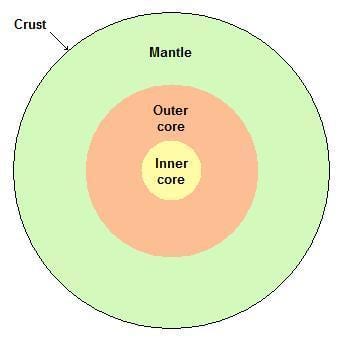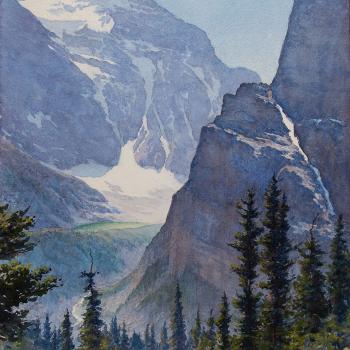
(Wikimedia Commons public domain image)
One of my earliest memories is a curious one: I recall, as a kindergardener (so at about five years old), addressing the board of the San Gabriel School District. I believe it was in a building near the intersection of Del Mar Avenue and Mission Road. I remember a chart of the solar system and a fairly large cardboard rocket standing to my left; I believe that my mother (and I, sort of) had made it, probably out of Quaker Oats containers.
I was addressing the school board on the nature of the solar system. I have no idea why. But I do recall telling them of one of my recent discoveries. Although some people probably think that we live inside the Earth as in a house, I said, we actually live on the planet’s surface. I can imagine, but don’t remember, stifled giggles and politely covered smiles from my audience.
Anyway, that brings me to my topic, which is the surface of the Earth. In “The Thin Blue Line (1)” and “The Thin Blue Line (2),” I’ve already briefly addressed the amazingly slight film of atmosphere that surrounds our planet. Now I want to say something very quickly about the Earth’s crust, on which we live.
The internal structure of our planet, as currently understood, can be conceived as a series of concentric spheres. Earth’s radius at the equator is 6,378 kilometers (3,963 miles). Its metallic “inner core” is solid, mostly of iron but also containing nickel, and its radius is approximately 1,220 kilometers. That solid “inner core” is surrounded by a liquid “outer core.” The “outer core,” a fluid layer about 2,400 kilometers (or 1,500 miles) thick, is also composed mostly of iron and nickel. Its outer boundary, touching on Earth’s mantle, lies 2,890 kilometers (1,800 miles) beneath the planetary surface, and the transition between the inner core and outer core is located approximately 5,150 kilometers (3,200 miles) beneath that surface. The “outer core” is, in turn, contained within Earth’s viscous “mantle,” which is the single thickest of Earth’s major structural layers, extending from 2890 kilometers below the planetary surface to an average of just 35 kilometers beneath us. And then, finally, we come to the solid silicate “outer crust,” which is pretty much the planet of our daily experience.
To put this another way, an average of 35 kilometers or not quite 22 miles below our feet is the viscous “mantle” — viscous meaning gooey, gunky, not quite solid and not quite liquid. Far below that is the liquid “outer core,” within which, finally, floats the metallic inner core. It gives new meaning, doesn’t it?, to the concept of “solid earth” or terra firma.
To be continued.












